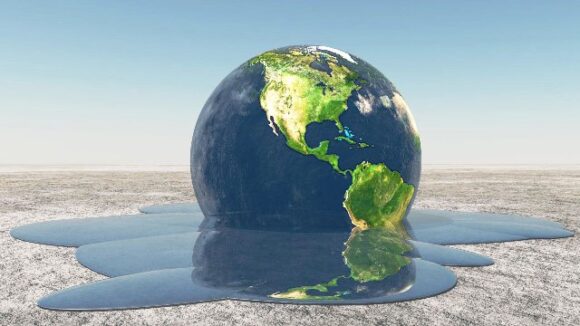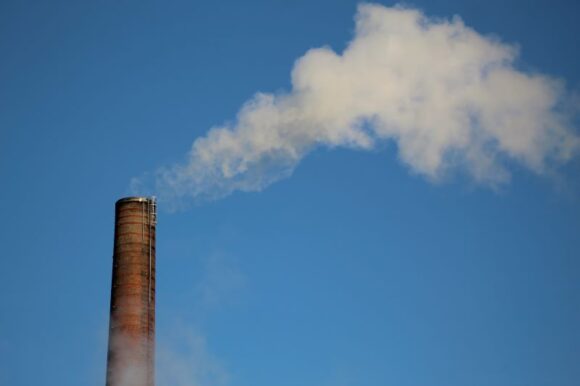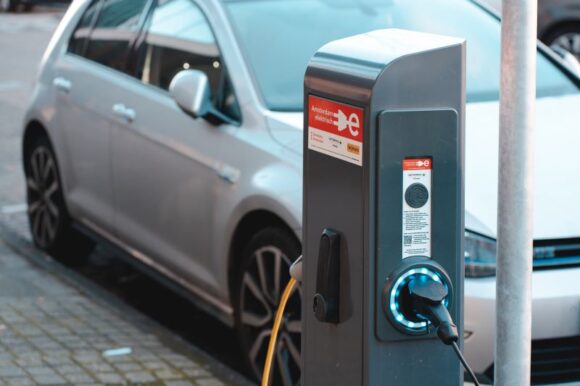
Last April, LymeLine.com published a “Primer on Global Warming and Climate Change”
Since that time, there has been a change in Presidential leadership; and, in January, the United States transitioned from a science-averse, to a science-centric Executive Branch, which may have an impact on how the Country views climate change.
This essay is a “refresh” of the April essay, and reviews a few recent weather events, in light of the consequences predicted by climate scientists; and lays out the climate priorities proposed by the Biden Administration. My goal in this essay is logically and concisely to present the issue of climate change for the reader’s consideration.
The Fundamentals:
Global warming is one symptom of the overarching phenomenon of climate change. The “side effects” of that warming include some significant shifts in weather patterns, and an increase in the frequency of abnormal and severe weather events.
The Paris Carousel:
 In 2015, representatives of 196 nations negotiated the Paris Climate Agreement under the auspices of the United Nation’s Convention on Climate Change. The goal, when signed in 2016, was to strengthen the international response to climate change mitigation.
In 2015, representatives of 196 nations negotiated the Paris Climate Agreement under the auspices of the United Nation’s Convention on Climate Change. The goal, when signed in 2016, was to strengthen the international response to climate change mitigation.
The Obama Administration pledged that, by 2025, the United States would cut carbon emissions by 26 percent below 2005 levels. He hailed our leadership in developing this Agreement as one of his major accomplishments.
His successor, Donald Trump, announced, in mid-2017, that the United States would terminate all participation in the Paris Agreement. He stated, “The climate deal was less about the climate, and more about other countries gaining a financial advantage over the United States. We don’t want other leaders and other countries laughing at us anymore.”
As the first and only country formally to pull out of the Agreement, his decision stunned our allies. He also then went on to roll back or loosen many of America’s key environmental policies and regulations.
President Biden signed an Executive Order soon after his inauguration that initiated the process for the United States to reenter the Paris Agreement. In February, Secretary of State Tony Blinken called it, “A good day in our fight against the climate crisis,” and promised that the United States would, “Waste no time in engaging our partners around the world to build our global resilience.”
The Focus on Fossil Fuels:

Since the mid-20th century, human activities have had an extraordinary impact on the Earth’s climate; and scientists have concluded that burning carbon-rich fossil fuels, like oil, coal, and natural gas, is the largest driver of that impact.
When they burn, fossil fuels produce water vapor, carbon dioxide (CO2), and trace gases like methane and nitrous oxide, which are collectively referred to as “greenhouse” gases.
Their accumulation in the atmosphere is responsible for the “greenhouse effect”, which is the warming that occurs when these gases trap heat in the lower atmosphere; i.e., in a manner that’s similar to the heat-trapping glass on a greenhouse.
The most important of these gases is CO2. Although it absorbs less heat per molecule than methane or nitrous oxide, it is remarkably more abundant and remains in the atmosphere much longer.
Data from NASA’s Orbiting Carbon Observatory show that we now add about 40 billion tons of CO2 to the atmosphere every year, mostly by burning fossil fuels. Scientists estimate that this increase in atmospheric carbon dioxide is responsible for about two-thirds of the total energy imbalance that is causing the Earth’s temperature to rise.
In 2019, coal accounted for 40 percent of global CO2 emissions, oil for 34 percent, and natural gas, 20 percent. Note that, worldwide, China and the United States rank first and second, respectively, in annual volume of CO2 emissions.
Carbon dioxide levels today are higher than at any point in recorded history. According to Princeton University-led research published in the journal “Nature Climate Change,” even if we immediately stop all new CO2 emissions, the carbon dioxide that is already in the Earth’s atmosphere could continue to warm our planet for hundreds of years.
It’s been well said by Theodor Geisel: “How did it get so late so soon?”
Recent Unusual Weather Events:
I have selected a few events to illustrate the outcomes predicted by climate scientists.
You might argue that these examples do not really reflect climate change, but are more akin to changes observed by, and often attributed to, Mark Twain: “If you don’t like the weather in New England now, just wait a few minutes.”

Last year, five of the six largest fires in California history, and three of the four largest in Colorado history, all burned.
By the end of the year, more than four percent of California’s landmass had been consumed by fire, making 2020 the worst wildfire season in California’s modern history. The U.S. Forest Service observed that California’s mean air temperatures have risen since 1980, resulting in increased evaporation, drier brush, and, with concomitant reductions in rainfall through recent decades, had generated one of the worst “megadroughts” in California history.
A “perfect storm” of weather events, which included a prolonged heat wave followed by a remarkable and unprecedented lightning siege of over 10,000 strikes over several days, finally precipitated the conflagration.
Earlier this year, the Texas “deep freeze” brought the coldest temperatures in over a quarter century to the state. Most of the state was covered with snow, a freak event, and their under-prepared and poorly-designed power grid was brought down for almost 4.5 million Texans, many of whom were forced to remain in poorly insulated, freezing homes for more than a week.
At least one elected official decided to flee to Mexico.
Extreme weather events have also been on the increase in the northeastern United States. Major winter storms impacted the region in both December 2020 and February 2021; and a study recently published in the journal, “Nature Climate Change”, reported that the 27 major Northeast winter storms that occurred in the decade spanning the winter of 2008-9 through 2017-18, were three to four times the totals for each of the previous five decades.
The Administration’s Climate Agenda:

In January, President Biden said, “We’ve already waited too long to deal with this climate crisis, we can’t wait any longer. We see it with our own eyes. We know it in our bones, and it’s time to act,” (Come on, Jack!)
He ordered a pause on new oil and gas leases on public lands and waters, setting a goal to conserve 30 percent of U.S. lands and ocean waters over the next 10 years. He also added new regulations targeted at reducing greenhouse gas emissions, and directed federal agencies to eliminate fossil fuel subsidies.
He reiterated his daunting climate goals. I’ve listed the highlights of his $2 trillion plan in the following:
- Achieve net-zero emissions by 2050. (i.e., we can still produce some emissions, as long as they are offset by activities that reduce greenhouse gases already in the atmosphere (e.g., planting new forests.)
- Make the electricity sector free of carbon pollution by 2035.
- Make all new U.S.-made buses zero-emissions by 2030.
- Create jobs for construction workers, scientists, and engineers to build electricity-producing sources from wind and solar.
- Develop an Energy Efficiency and Clean Electricity Standard for utilities and grid operators.
- Create a climate research agency that works to make nuclear reactors safer and more efficient.
Final Thoughts:
The issue of mitigating climate change will be very contentious, and it appears that Republicans are already digging in against the President’s plans.
For example, Wyoming’s Senator John Barrasso (R) has said, “I’m not going to sit idly by, or my colleagues, if this administration enforces policies that threaten my State’s economy …” As a point of reference, Wyoming produced 102.1 million barrels of crude oil in 2019, up from 87.9 million barrels in 2018.”
In contrast, the President insists that a shift to clean energy will create better paying jobs, saying, “We can put millions of Americans to work modernizing our water systems, transportation, and our energy infrastructure.”
I just don’t know, after more than a year of dealing with COVID, whether a divided United States will have the mettle for climate. The biggest hurdle I see is transportation. Americans are buying more cars and driving more miles. We’ll soon be flying more. Prior to the pandemic, air travel had been up 5 percent a year over the past few years.

Unlike the promise of electric cars, there is no electrical alternative for long distance air travel.
Further, in Climate Change: The Science of Global Warming and Our Energy Future, the authors observe, “Many Americans view the findings of climate science through a partisan or ideological lens. For those who reject the scientific consensus, their views are based more on emotional reactions than rational responses. It is of course also true that some people who accept the consensus are doing so for reasons that are not exclusively rational.”
I mentioned “planting new forests” above. I realize that climate mitigation efforts like planting trees may be a long-term and certainly idealistic solution, but there is also the option of slowing down or putting a halt to deforestation. We should probably do both.
In closing, my next essay considers the epic poems of folk and rock music.
In starting the transition, I wonder how Dylan would revise the lyrics of Subterranean Homesick Blues to reflect climate change. Would he still say, “You don’t need a weather man to know which way the wind blows”?
This is the opinion of Thomas D. Gotowka.

About the author: Tom Gotowka’s entire adult career has been in healthcare. He’ will sit on the Navy side at the Army/Navy football game. He always sit on the crimson side at any Harvard/Yale contest. He enjoys reading historic speeches and considers himself a scholar of the period from FDR through JFK.
A child of AM Radio, he probably knows the lyrics of every rock and roll or folk song published since 1960. He hopes these experiences give readers a sense of what he believes “qualify” him to write this column.
I agree that our country’s response to the pandemic does not build confidence that we are ready to make hard changes to combat climate change, but the not doing so will ultimately disrupt our lives far worse than COVID has. We need strong leadership and a well thought plan that address concerns over lost income and lost freedoms to get the US moving in the right direction.
A vital part of this conversation has to be population increase. The world population has skyrocketed and every one of those persons increases the amount of greenhouse gases released into the atmosphere whether they actively participate in generating them or passively by products they consume. It’s not a question of whether people can financially ‘afford’ to raise larger families, it’s a question of natural resource depletion through extraction and utilization. We view many of these resources as commodities ignoring the consequences of their often unsustainable development. A ‘renewable’ resource only fits that description if you can ‘renew’ it within the timeframe of the population that uses it. Otherwise you’re just kicking the can down the road for some future generation to deal with. When I taught a basic geology class to college students one of the things I would do was have them look around the room and ask which things in the room were dependent on geology. Some things were obvious – the tile, the blackboard, the metal hardware, but almost everything in the room was. The paint needs pigment from minerals, the wood for the desks needed to be cut down with a metal saw and sanded with sandpaper, the sheetrock needs gypsum – the list goes on. Each of those items was reliant on an extractive industry. Fossil fuels moved the personnel and the materials and provided power to produce the products. So more population = more demand. As Paul Simon sang “The planet groans every time it registers another birth,”